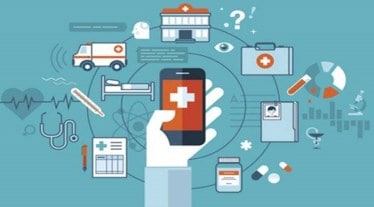By Saurav Kasera
As the Covid-19 pandemic prodded changes across organizations around the world, the requirement for computerized medical care originated from physical removing rules, further empowered by a change in outlooks of the two specialists and patients with reports of arising variations of the destructive Coronavirus. ‘Virtual clinics’ are basically the on the web or advanced augmentation of medical services offices like emergency clinics, nursing homes, and dispensaries. Named as a ‘futuristic’ step towards giving open mediation to people, ‘virtual clinics’ are acquiring enormous reception because of the simplicity of administrations and straightforwardness in conveyance.
Virtual clinics can likewise appear as online counsel, ‘teleconsultation’ or ‘e-meeting’ through particular individual foundation of clinical experts wherein patients contact, counsel and follow up carefully. While still in its creating stage, computerized medical services and virtual facilities are being planned as ‘solution ecosystem’ highlighting profoundly tailor-made or customized individualized care.
There has been an outstanding multiplication of virtual facilities in India. Impending virtual consideration offices in India are being sent off significantly that reach from “critical consideration” to longitudinal virtual consideration, reconciliation of teleconsultation with virtual wellbeing arrangement programs, and different other half and half models. Further, online courses and projects that fall into preventive consideration aspects of advanced medical care are flooding. These give specific advising on prediabetes, thyroid, and so on, and are instrumental in postponing or forestalling the beginning of numerous hazardous illnesses. For patients with complex ongoing circumstances, computerized short term checking is empowering clinical experts to associate and give live assessments.
ALSO READ | Focus on femtech: New journey towards women’s health
These possibly diminish medical clinic affirmations as well as increment patient fulfillment, cost-viability and therapy adherence. Unequivocally helped by AI advancements, computerized medical services abilities are rapidly further developing remote imaging that works with clinical cooperation and ideal analysis. While the pandemic achieved this change in perspective from in-person clinical consideration to computerized medical services, an entirely different universe of chances anticipates this adjustment of the functional engineering of clinical organizations.
Today, virtual facilities are progressively ending up unavoidable in medical care because of their duplicated admittance, complex results, and superb reasonableness. As with any new adoption, virtual healthcare is and will continue to face a number of challenges. Virtual Clinic ecosystems are still evolving in terms of business models and industry frameworks. One overarching challenge is the decreasing willingness of patients to pay for teleconsultation convenience as the pandemic ebbs. As physical restrictions are being lifted, patients are now more interested in travelling to the clinics than interacting with digital medical assistants.
Telemedicine is an evolving healthcare technology. Earlier, the focus was to connect healthcare seekers and providers who remained isolated due to geographical boundaries. However, the focus has now shifted to providing care with quality doctor-patient interactions, something virtual healthcare technologies continue to struggle with.
In the era of digitization, patients’ demand for on-time care has picked up the pace. However, healthcare providers cannot dismiss the idea that a patient’s journey starts with gaining confidence in the knowledge and experience of the doctor. It lays the foundation of respect and trust between doctors and patients, two core facets that we have missed in our sprint to expand the number of patients attended to through virtual care.
For every medical treatment, open communication is essential where doctors can interact with patients to unearth the depths of a health issue. Telemedicine has transformed the healthcare segment but lacks comprehensive care in cases where patients cannot communicate their symptoms, such as children, mentally challenged individuals, or women who are not comfortable sharing their medical conditions via mobile phones.
Additionally, a physical check-up is crucial for in-depth diagnosis and high patient satisfaction. Some research-based studies have charted positive associations between in-person patient experience and favorable health outcomes. Therefore, the question is not about physical or, virtual but how do you integrate physical in virtual?
ALSO READ | Demystifying myths about robotic-arm assisted knee replacement
In the wake of digital transformation, making strides to develop technology centered on the patient’s requirements is the need of the hour. It is crucial to humanize the whole experience for better healthcare outcomes. Therefore, the industry will have to combine online and offline consultations to instill the complete doctor-patient journey with a human experience and create a comprehensive “Return on Health” framework.
(The author is the Co-founder of Clirnet. Views expressed are personal and do not reflect the official position or policy of FinancialExpress.com.)
